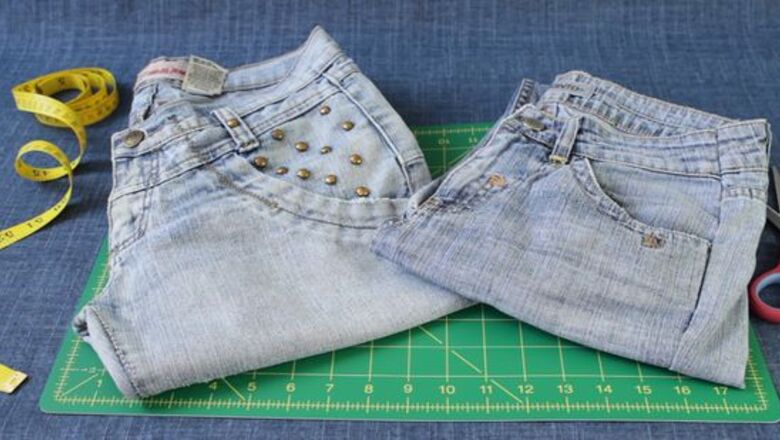
views
- Choose 2 pairs of matching jeans for your long denim skirt. Lay the jeans flat and cut along the entire inner leg seam.
- Cut along the vertical seams of the crotch and overlap the crotch fabric.
- Assemble your jean skirt by arranging the panel pieces in the center between the main pair of pants. Then, sew the panels together.
Cutting the Jeans

Choose 2 pairs of matching denim jeans for your long skirt. One pair needs to fit you well around the waist since you'll use it as the top of the skirt. It doesn't matter how the second pair of jeans fits, as long as the color of the denim matches the other pair.Tip: Pick straight, wide-leg, or boot-cut jeans instead of skinny jeans. These have more fabric and space to work with. If you'd like to make a lighter, flowing skirt, choose jeans that also contain synthetic material, such as elastic, or a polyester blend. The cotton and synthetic material create a stretchier fabric that will make a lightweight skirt.
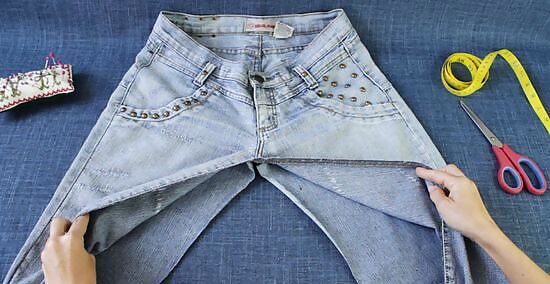
Lay the main pair of jeans flat and cut along the entire inner leg seam. Spread the pair of jeans that you're going to use for the main body of the skirt flat on your work surface. Take a pair of fabric scissors and cut near the bottom hem of the pant leg at the inner seam. Cut all the way up the inner leg across the crotch and down the opposite pant leg. Do not cut into the seam since this makes the stitches unravel and you'll be using the seam when you assemble the jean skirt.

Cut about 2 inches (5.1 cm) along the vertical seams of the crotch. Start cutting at the middle of the crotch where the vertical and horizontal seams meet. Cut up along the side of the vertical seam by about 2 inches (5.1 cm). Then, flip the jeans over and repeat this for the back crotch. This helps the fabric lay flat instead of puckering up. Remember not to cut into the seam itself so the denim doesn't fray. It's fine to cut even higher along the crotch so the fabric lays flat. If you accidentally cut too high on the crotch, you can just sew the fabric in place later.
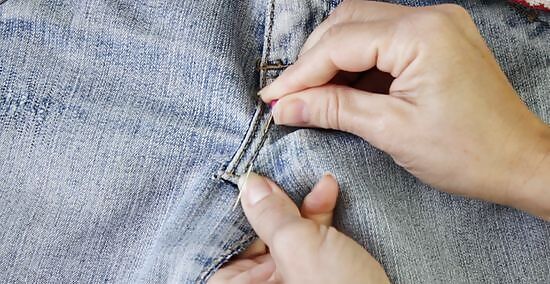
Overlap the crotch fabric and pin it in place. Once you've cut along the front and back crotch seams, overlap the fabric so the denim lays flat instead of puckers. If it still puckers a little, cut another ⁄2 inch (1.3 cm) along the seam. Then, insert a sewing pin through both layers of fabric on each side. Position each sewing pin so it's parallel to the top crotch seam.
Creating Center Panels
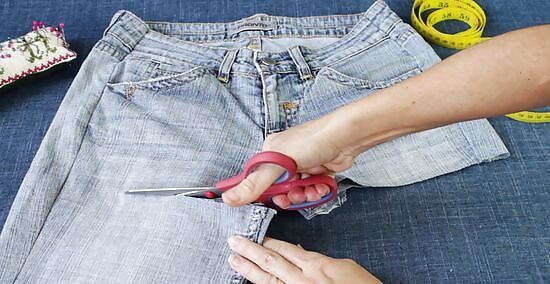
Use scissors to cut the legs off of the second pair of jeans. To give you fabric for the panels of the skirt, spread the other pair of jeans flat on your work surface. Cut from the top of the crotch seams to the side of the jeans without cutting into the back pockets. Try to cut as close to the pockets as you can though, to give you the most fabric to work with. Repeat this for the other leg so you have 2 pieces of fabric. You won't need the leftover waist piece from this pair of jeans.
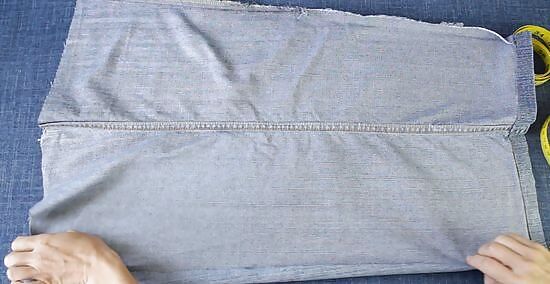
Cut straight along the inner seam for each leg piece. Take 1 of the pant legs, which looks like a tube, and cut from the bottom hem to the top of the leg. Cut close to the inner leg seam without cutting into the stitches themselves. Repeat this for the other leg piece. Now, you'll have 2 wide panel pieces of fabric to use for the center of your jean skirt.
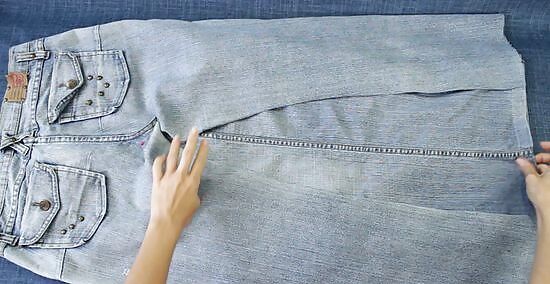
Arrange the panel pieces in the center between the main pair of pants. Slip 1 of the panels into the center of the first pair of jeans so the right side of the fabric faces up. Move the panel so the bottom edge lines up with the bottom of the original pants and line up the seam so it's in the center. Repeat this for the other panel.Tip: It's important to line up the bottom edges so your skirt has a straight hemline.
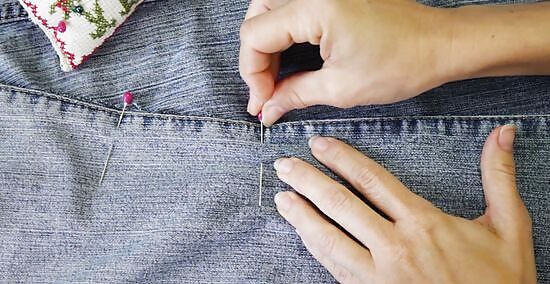
Pin the edges of the panel pieces in place. Take sewing pins and insert them through both layers of denim. Insert pins about every 4 inches (10 cm) from the bottom hemline up and around the panel to the opposite hemline. Then, repeat this for the back panel. Insert the pins so they're parallel with the seam line.
Assembling the Long Jean Skirt
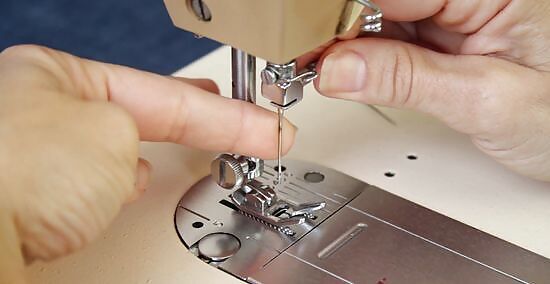
Set up your sewing machine with polyester thread and a denim needle. A polyester thread is stronger than cotton thread, so it won't snap or break as you sew through the thick denim. You'll also need to install a heavy-duty sewing needle that's designed for denim. Most of these needles are labeled "heavy duty" or "denim." If you use a thinner needle, it may break. You can choose a thread color that matches the fabric or pick a thread that matches the color of the thread on the jeans, such as gold.
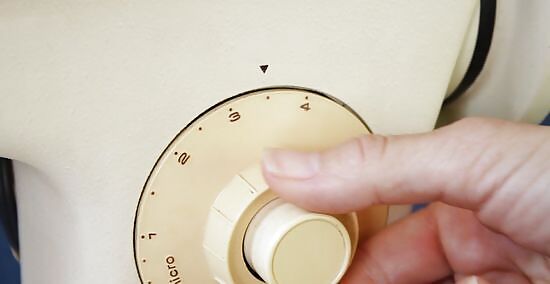
Adjust the stitch length between 3.5 and 4 mm (0.35 and 0.40 cm). Set the machine to make long straight stitches so the needle is less likely to get stuck in the thick denim. You'll be following the straight stitch line that's already on the inner pant legs. If your machine is struggling to stitch through the denim, take it even slower or turn the hand wheel to make stitches.
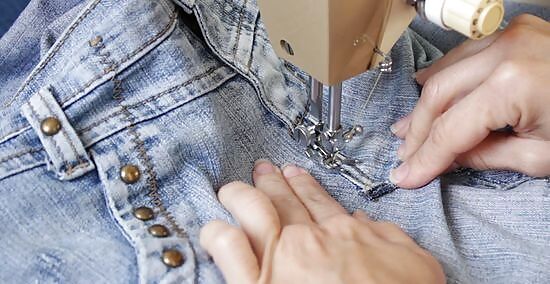
Straight stitch along the seam where the panel meets the inner pant leg. Start at the bottom hemline and sew up along the inner leg seam. Sew directly over the existing seams so it goes through the panel underneath. When you reach the crotch, turn the fabric to sew the crotch slit closed. Then, straight stitch down the other inner leg seam.Tip: There's no need to sew the skirt inside out since you're following the original seam. This makes it a great project for beginning sewers. Repeat this for the back panel of the skirt. Remove the sewing pins as you stitch so you don't accidentally sew over them.
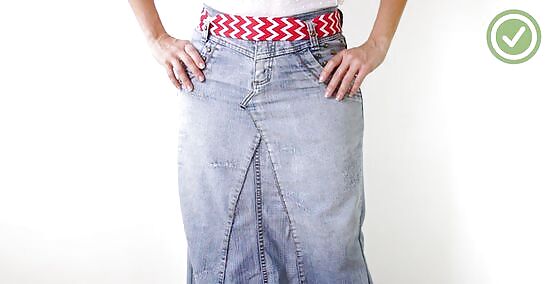
Turn the skirt inside out and cut off the excess fabric. Flip the skirt so the wrong side of the fabric faces out and you can see the excess fabric of the center panels. Use your scissors to carefully cut the excess panel right along the seam you just sewed. Try to leave about ⁄4 inch (0.64 cm) of fabric next to the seam. Ensure that you don't cut into your seam or you'll get a hole in the middle of the skirt.


















Comments
0 comment